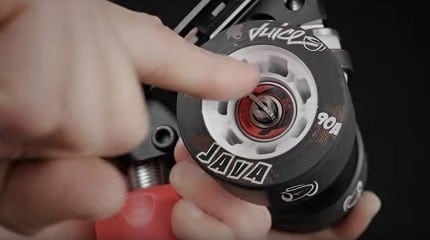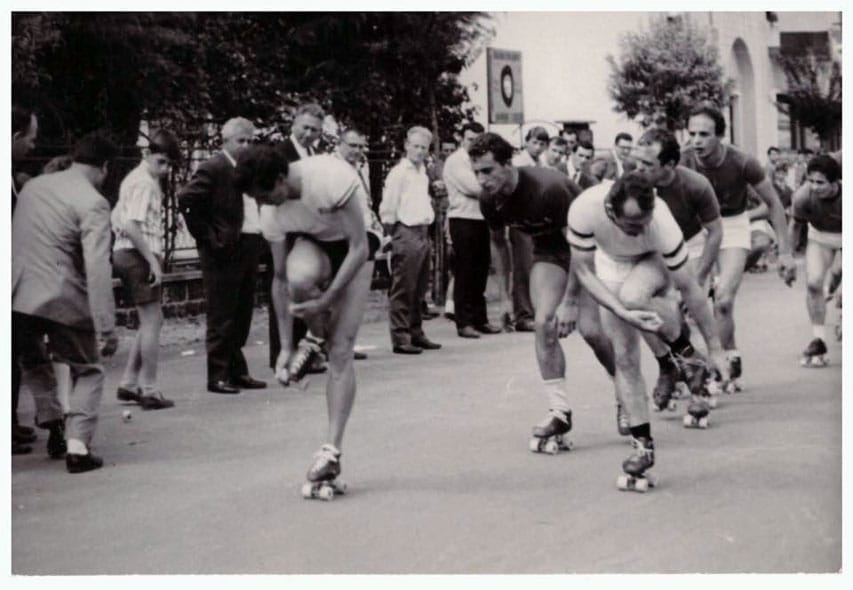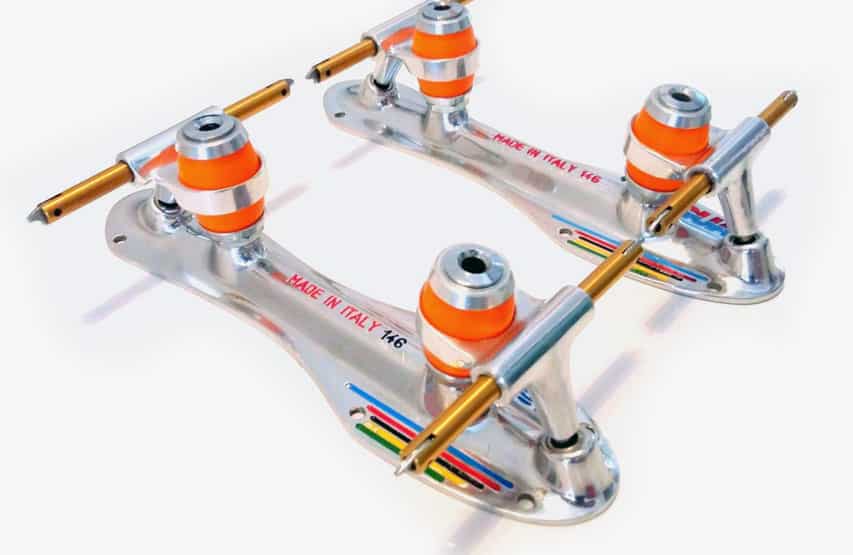The history of traditional roller skates with clip-axles
The traditional frame with the two wheels next to each other and the clip axles has been forgotten in recent years. However, it proved to be extremely practical, as it allowed the rollers to be changed in no time at all without tools. It has made a comeback in 2010 thanks to the return of the Roller Derby ...
Par alfathor

Why clip-axles?
The clip axles appear thanks to / because of the wooden wheels.
There is no useful innovation without practical application. The use of clip-axles is closely related to the use of wooden rollers in high speed rolling!
Before the introduction of urethane wheels in the 70’s, skaters used wooden rollers because of their gliding properties. The problem is that they wear out quickly, even very quickly! In some long-distance races, skaters had to change their rollers during the race in order to finish in the best conditions. But it is complicated to handle with keys and wheels at high speeds. So a technical solution had to be found to replace the wheels in no time.
This is how the clip-axles were invented. They were invented in 1965 by Enzo Boiani, the founder of the Boen brand. Despite our research, we could not find a patent to protect this innovation. It seems that Boiani wanted this concept to spread quickly and easily in the world of roller speed skating.

Extract from the Boen website:
The quick wheel change thanks to the clip-axles has changed the racing physiognomy. Thanks to this, there is no need to stop at endurance races to change the old wooden wheels! You can even let a colleague push you while you work on your equipment.
Contemporary clip-axles
Competing brands quickly copied this technology in the following years. Today, there are still a few brands that offer rails with clip-on axles.
In the roller derby, SureGrip introduced the DA45 to the market. Tests conducted by our colleagues at RollerQuad.net showed a certain fragility of the product.
We can also mention the Lazer brand created by HawaiiSurf, whose equipment was really reliable. Unfortunately, the Paris store has stopped production.
On the other hand, the Italian company Rogua, specialist in speed quads, continues to produce clip-axle models. The Rogua brand was created in 1980 by Roberto Guadagno. It has recently made a comeback on the market with modernized products. The shapes, however, remain the original ones.
More recently, Powerslide has started its own production with the roller derby brand Chaya. Unfortunately, the lack of user confidence in this type of product makes it difficult for clip axles to find their place in the market.

